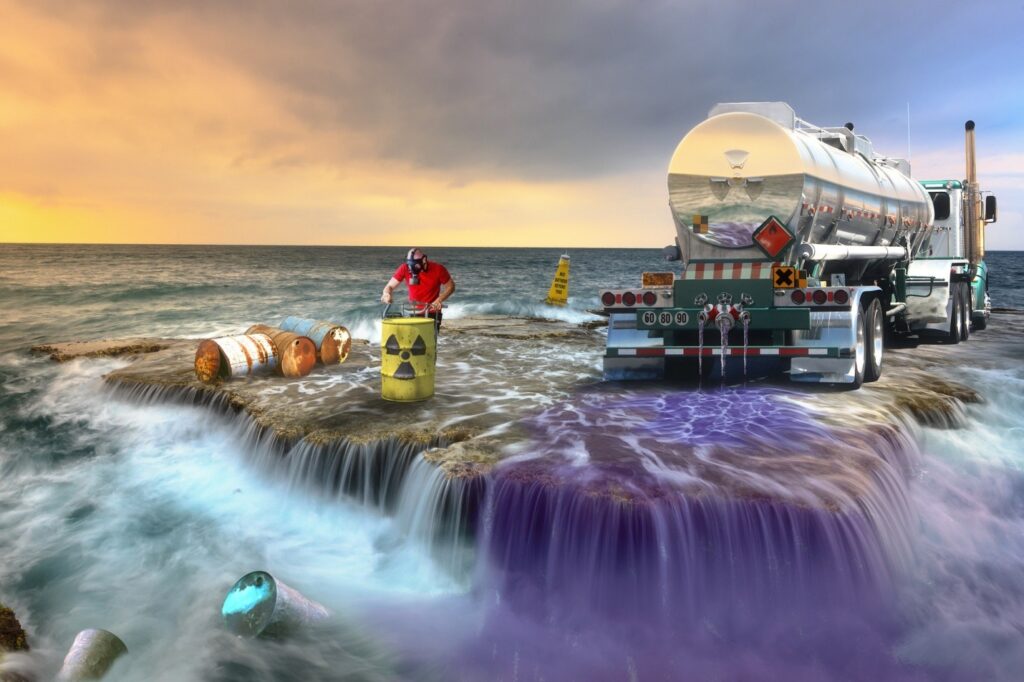The Greatest Guide To Reclaim Waste
Facts About Reclaim Waste Revealed
Table of ContentsThe 6-Second Trick For Reclaim WasteReclaim Waste Fundamentals ExplainedFascination About Reclaim WasteReclaim Waste Things To Know Before You Get ThisThe 9-Minute Rule for Reclaim Waste
Residential sewer waste refers to the waste and products from a residential septic storage tank. The appropriate administration and disposal of residential sewer waste need fluid waste to be moved to a sewage treatment plant where the correct methods and devices are used to purify and dispose of waste.
Industrial waste commonly consists of possible threats, such as flammable products or a combination of liquid and strong waste items, and calls for an advanced and detailed disposal process. The disposal of industrial waste typically includes the purification of waste before transport to ensure secure and proper disposal. Hazardous waste is created from by-products and runoff of industrial procedures and manufacturing.
This kind of waste can not use the exact same sewer monitoring transport or procedures as septic or commercial liquids. The hazardous waste management process requires the evaluation and screening of fluid waste prior to it undertakes the disposal procedure (liquid waste disposal). Runoff waste is the liquid waste that comes from drainage and excess stormwater in extremely populated areas or cities
Drainage waste can create contamination and flooding if not taken care of effectively. Ensuring correct waste monitoring can protect against catastrophes and minimize environmental damage.
Examine This Report about Reclaim Waste
Call PROS Services today to find out about our waste monitoring and disposal services and the appropriate means to care for the liquid waste you generate.
(https://reclaimwaste1.mystrikingly.com/blog/efficient-liquid-waste-disposal-in-melbourne-why-reclaim-waste-is-your-go-to)Do you recognize what occurs to your water when you disengage, purge the bathroom or drain pipes the cleaning machine? No? Well, it deserves knowing. This supposed 'wastewater' is not only an essential source but, after therapy, will be launched to our land, rivers or the ocean. Used water from toilets, showers, baths, cooking area sinks, washings and industrial procedures is called wastewater.

water made use of to cool machinery or tidy plant and equipment). Stormwater, a type of wastewater, is drainage that streams from agricultural and urban locations such as roofings, parks, yards, roadways, paths and seamless gutters right into stormwater drains, after rainfall. Stormwater flows neglected straight to neighborhood creeks or rivers, ultimately reaching the ocean.
A Biased View of Reclaim Waste
In Queensland, most wastewater is dealt with at sewer therapy plants. Wastewater is transferred from residential or commercial sites with a system of sewers and pump terminals, known as sewage reticulation, to a sewer treatment plant.
The Department of Natural Resources suggests city governments concerning handling, operating and his explanation preserving sewerage systems and therapy plants. In unsewered locations, regional governments may call for owners to mount specific or house sewer therapy systems to treat residential wastewater from commodes, cooking areas, washrooms and washings. The Department of Natural Resources authorizes making use of family systems when they are verified to be efficient.
Many stormwater receives no treatment. In some brand-new communities, therapy of some stormwater to eliminate trash, sand and gravel has begun using gross pollutant traps. Wastewater therapy occurs in four stages: Removes solid matter. Larger solids, such as plastics and other things incorrectly discharged to sewage systems, are removed when wastewater is travelled through displays.
Wastewater then streams right into big storage tanks where solids resolve and are eliminated as sludge. Oil and residue are skimmed from the surface. Makes use of tiny living microorganisms recognizes as micro-organisms to break down and remove continuing to be dissolved wastes and fine fragments. Micro-organisms and wastes are incorporated in the sludge. Eliminates nitrogen and phosphorus nutrients that can trigger algal blossoms in our rivers and endanger marine life.
Some Ideas on Reclaim Waste You Need To Know
Nutrient removal is not offered at all sewer treatment plants because it requires pricey specialized tools. Clear liquid effluent created after treatment might still have disease-causing micro-organisms - liquid waste disposal melbourne.

This typically indicates wastewater needs to be treated or impurities gotten rid of before it can be discharged to waterways. Many wastewater flows right into the sewerage system. Under the Act, regional governments administer authorizations and permits for eco pertinent tasks (Periods) entailing wastewater launches that could have a regional effect. The division carries out approvals and licences to Ages including wastewater releases that may have a regional or statewide influence.
Getting My Reclaim Waste To Work
Otherwise, examples are taken for lab analysis. Usually numerous examinations are needed to establish the degrees of each of the various pollutants such as oils, heavy metals and pesticides in water. Tracking gives factual info concerning water quality and can confirm that licence problems are being met. The information obtained via surveillance offers the basis for making water top quality choices.